The Cami de Ronda, a gem of the Costa Brava, unquestionably ranks among my favorite places in the region. It’s a charming walking path that winds along the shore. However, to call the Cami de Ronda a path is an understatement. The Cami de Ronda trail spans the length of the entire coastline, but there’s more to it than that.
If you’re planning a trip to the Costa Brava, you can’t miss this attraction! The trail takes you to a world of picturesque cliffs, coves, and equally beautiful towns. More precisely, it connects a multitude of small towns and villages on this coast, such as Calella de Palafrugell, Sant Feliu de Guíxols, Tossa de Mar, or Lloret de Mar.
As a die-hard fan of routes with breathtaking views, I think this is one of the best places I’ve had the privilege to see. Besides being beautiful, I also felt really safe there.
In this post, I’ll talk about the Cami de Ronda trail – while walking, you can not only enjoy spectacular views of the Mediterranean but also discover the region’s many attractions.
Table of Contents
Cami de Ronda – history
Camí de Ronda is a coastal path along the rugged Costa Brava coastline. This coastal path has been in use for more than 1,000 years. Initially, it was a path used by fishermen and sailors as a route to help them get home in case of trouble, such as being able to return to their ports when they were shipwrecked or had to leave their boat in a sheltered place to escape a storm.
Only later did it become a path that connected the various villages, beaches, and bays along the Costa Brava (source: Spanish Guide to Palamos). In the twentieth century, on the other hand, the Spanish Guard used it to patrol the coast, on the lookout for contraband and illegal activities (they patrolled the sea, for example, to combat smuggling). Illegal traffic consisted primarily of tobacco; penicillin, coffee, sugar, pepper, or chocolate were also among the smuggled goods. Hence its current name: “Camí de Ronda” – “Circular Path.”
What to know about the Cami de Ronda?
The trail is approximately 200 kilometers long. You can explore the entirety of this trail, or choose sections of a chosen level of difficulty and length, making it an excellent choice for the whole family, as well as for advanced travelers. I myself walked several dozen kilometers, spreading it out over several days.
Keep in mind that the path has some steep sections, so make sure you have the right footwear and think about your physical capabilities before setting out. It is important to use the built paths, not to go off the trail on the closed parts (there are dangerous moments), not to litter, and to respect the local flora and fauna.
The trail is not designed for cycling, but there are parallel trails that are wide and safe for cyclists nearby.
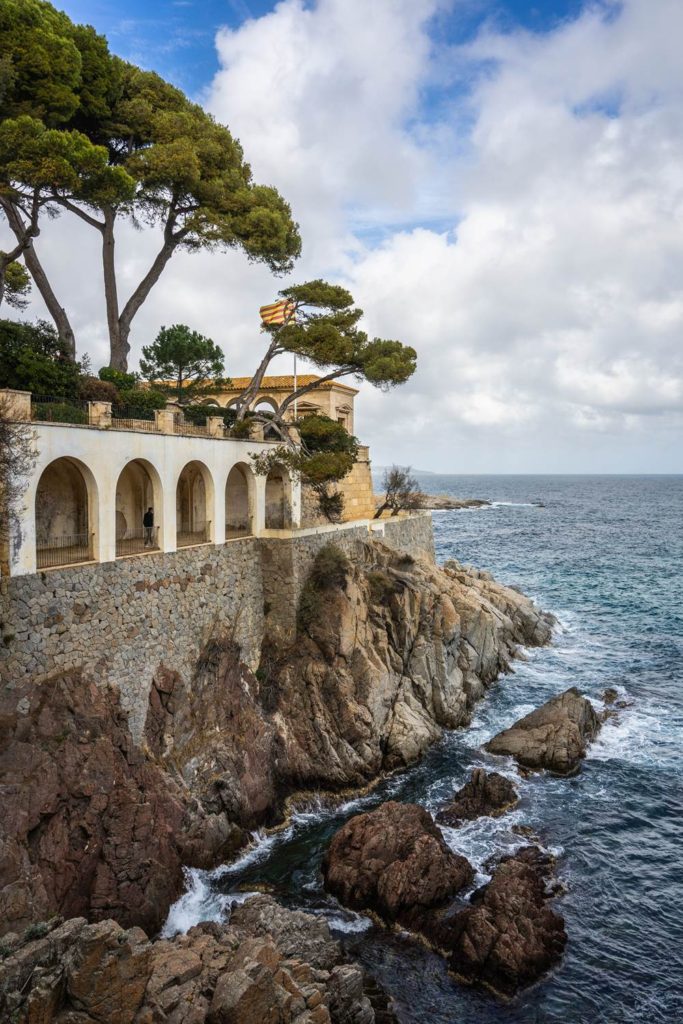
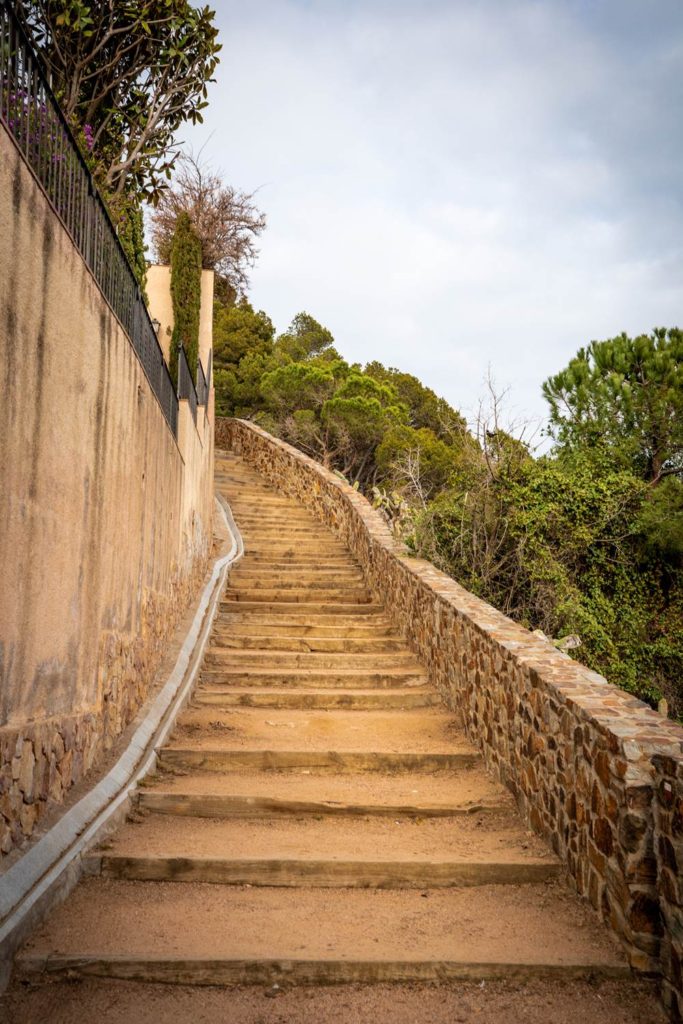
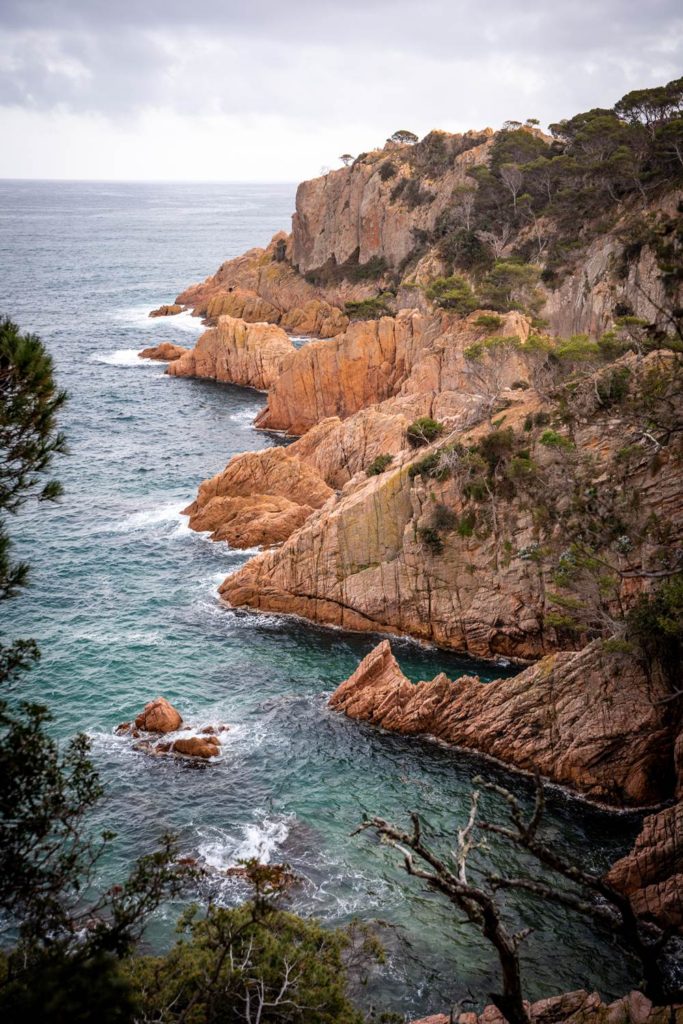
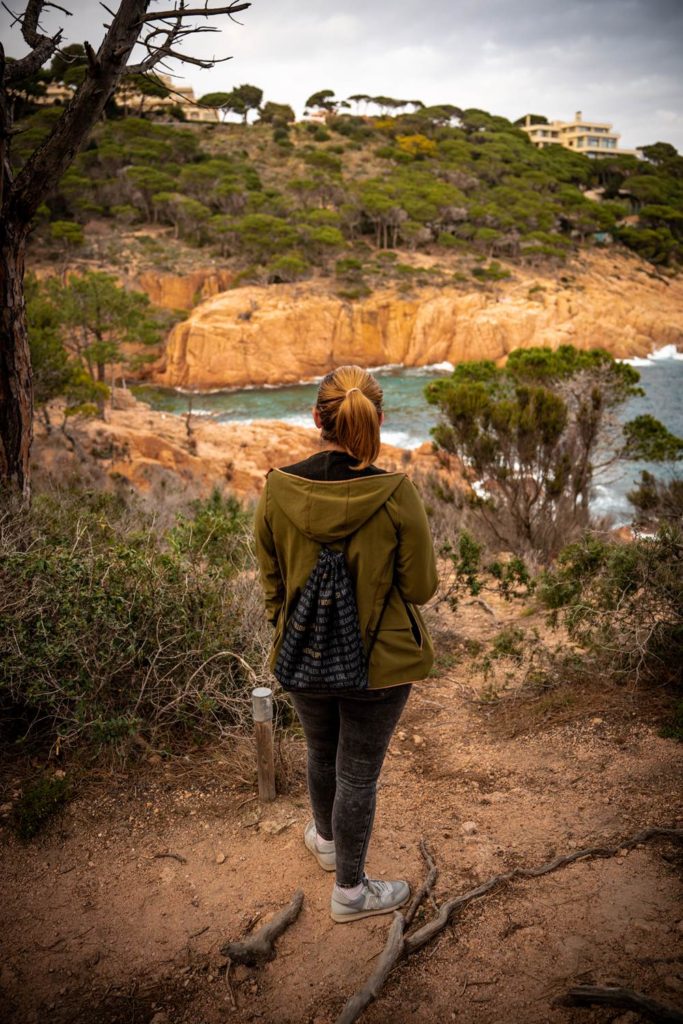
Where does the trail lead? Which route to take?
The Cami de Ronda is a paradise for hikers and hiking enthusiasts. It is divided into two main trails:
- LINEAR CAMÍ DE RONDA (linear, due to its location) a 43-kilometer route (starts in Sant Feliu de Guíxols and ends in Begur).
- CIRCULAR CAMÍ DE RONDA (circular) with a length of 140 km (begins and ends in the town of Girona).
I have walked many kilometers of this scenic route along the coast, and I can say that each section is beautiful and unique Walking along the trail, you pass charming coves, such as Cala Pola or Cala Sa Conca, which are stunning with crystal clear water and golden sand. It is worth stopping for a while to relax or swim in these picturesque places. Therefore, remember to bring a bathing suit, a head covering, and plenty of water!
As for the circular part of the route, this trail is designed to be walked in eight days, so it is especially dedicated to long-distance walkers. It passes through the Les Gavarres range, walks along the Costa Brava coast, and then returns to Girona via l’Empordanet and the summit of Santuari dels Àngels. In the chapel on this peak, painter Salvador Dalí married his wife Gala.
I particularly recommend:
The surroundings of St. Feliu de Guíxols:
Starting from the town of Sant Feliu de Guíxols, we traverse the coast passing through Bay del Molí, Maset Bay, and Sant Pol beach. The next stage is S’Agaró, where the Camí de Ronda path was transformed into a modern promenade planned by architect Rafel Masó in 1916. The route continues towards Sa Conca beach and then, circling the mouth of the Ridaura River, arrives at Platja d’Aro. On this stretch, I recommend taking a look at the Cap Roig botanical garden.
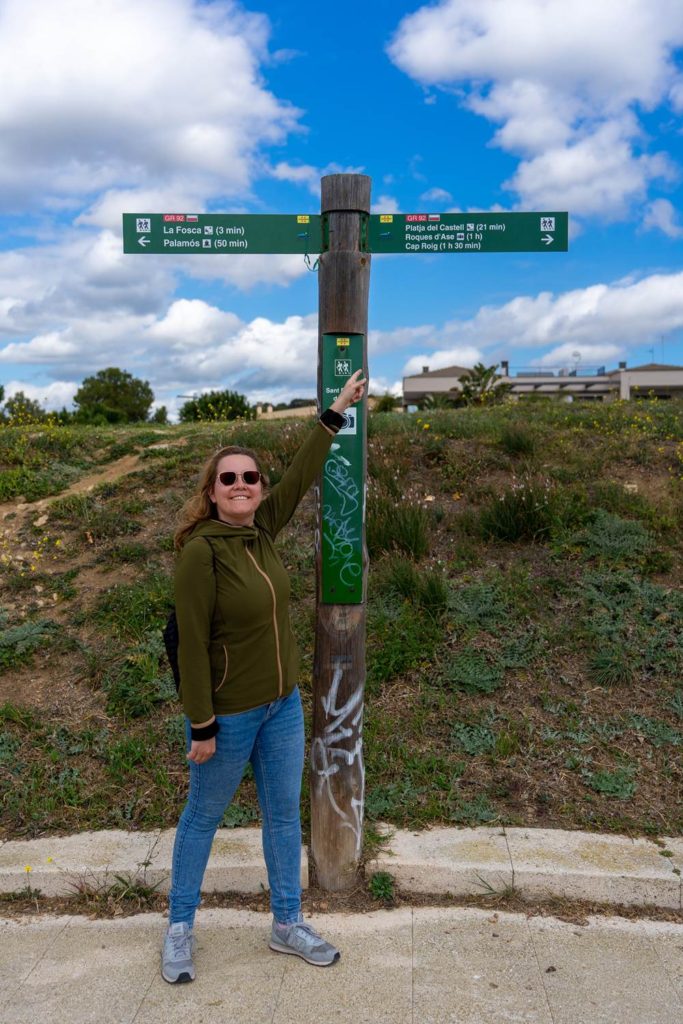
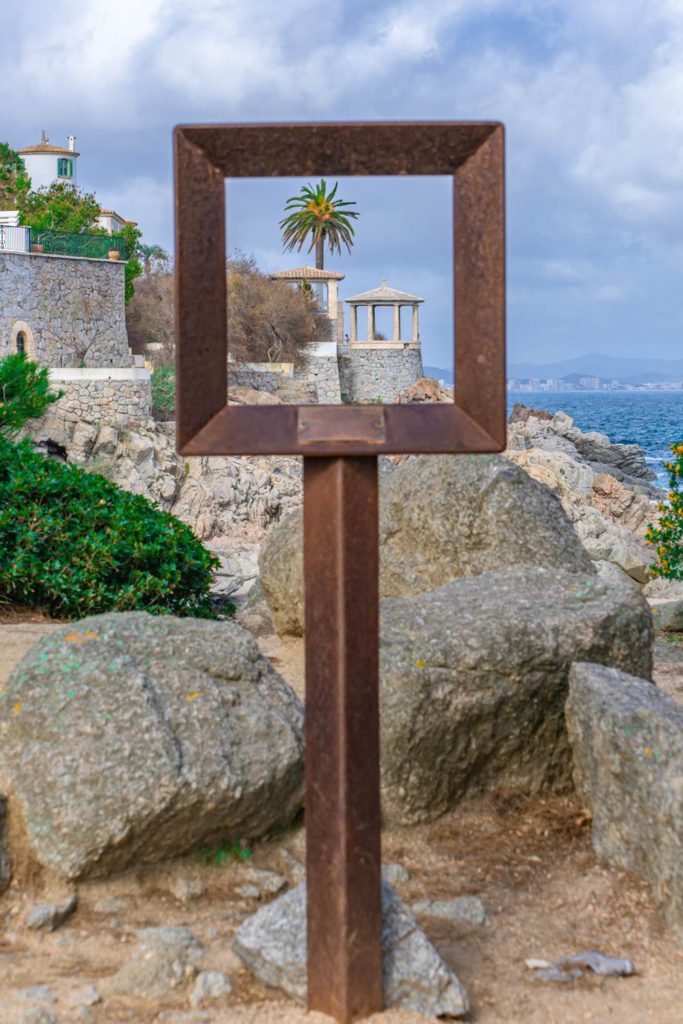
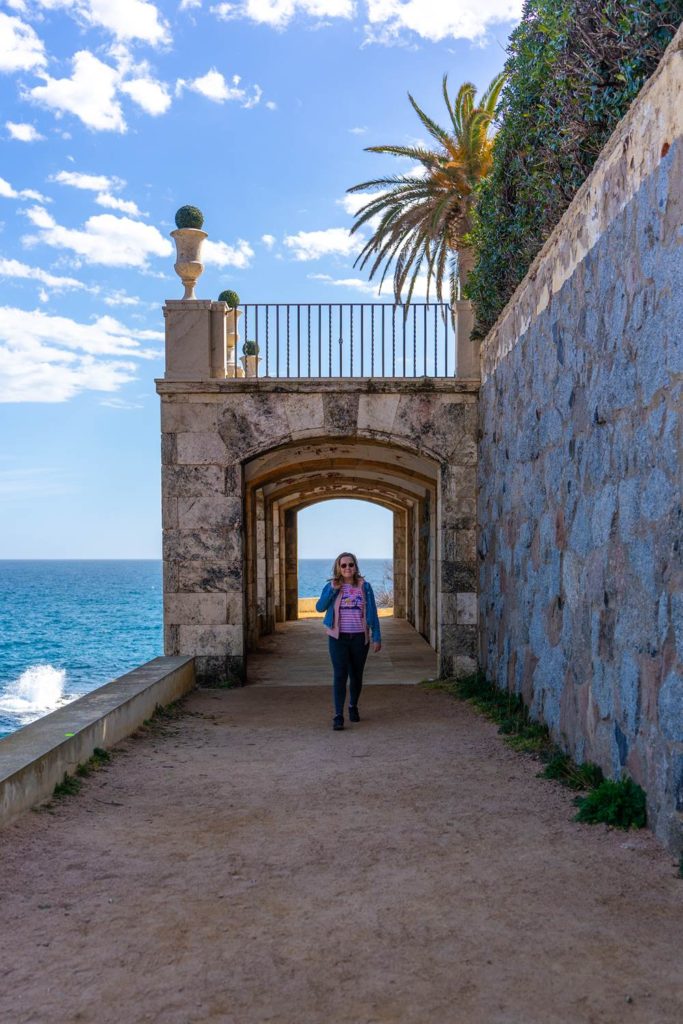
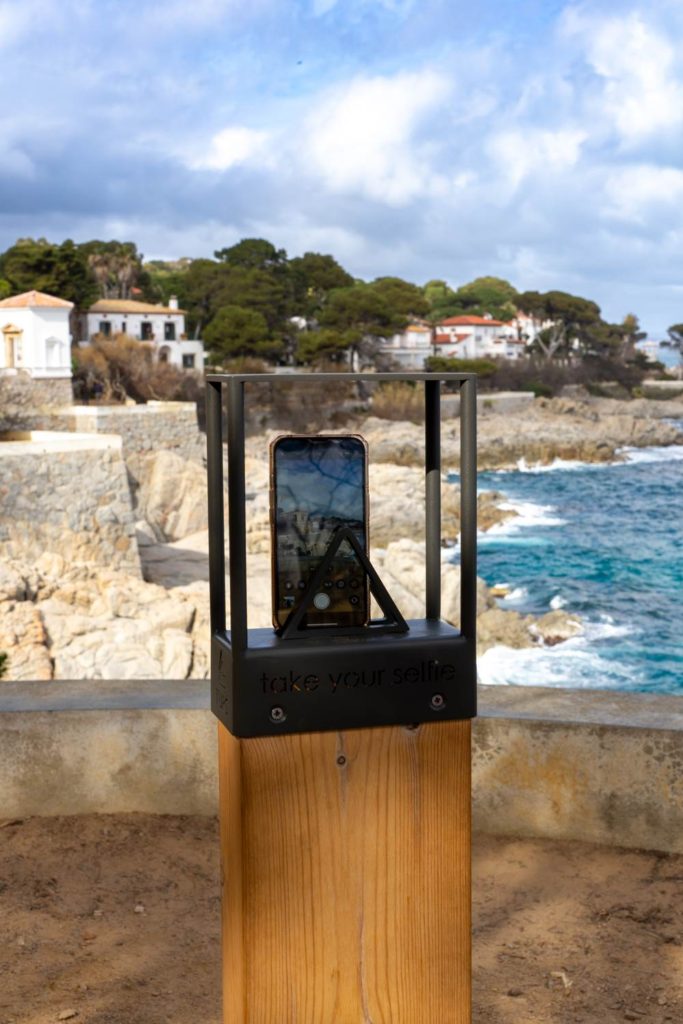
The surroundings of Palamos
We take off from Platja d’Aro. From this charming village, we walk along the promenade towards Sant Antoni de Calonge. The next part of the route is breathtaking, as the Camí de Ronda path turns into a narrow trail that winds between impressive cliffs, coves, and beaches. In contrast, the stretch from Sant Antoni de Calonge to Palamós is a pleasant, easy-to-walk promenade along the calm sea.
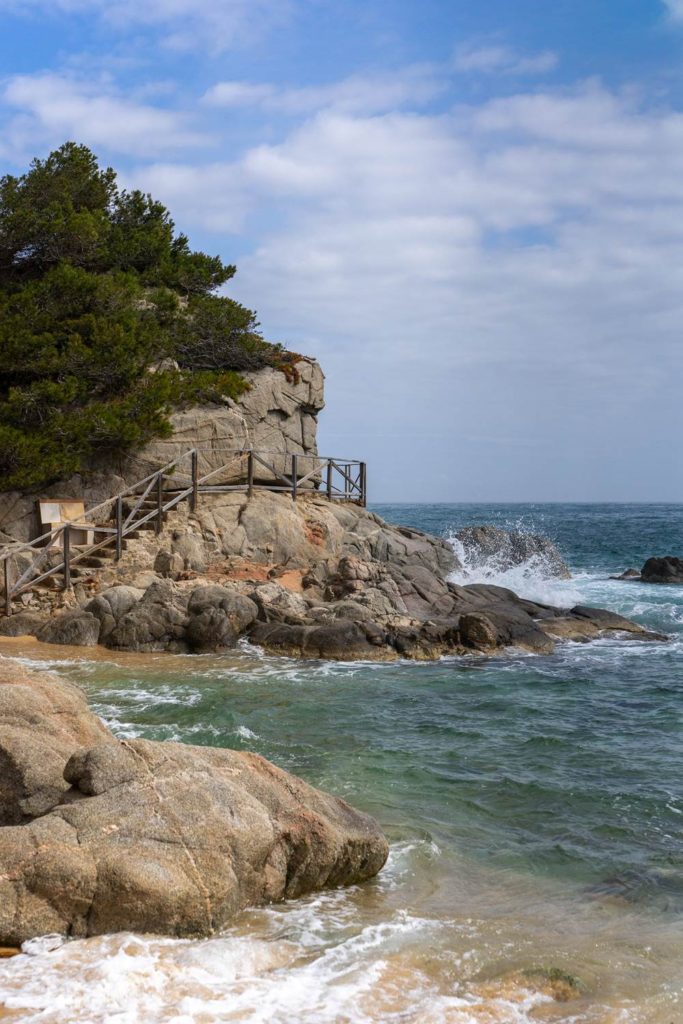
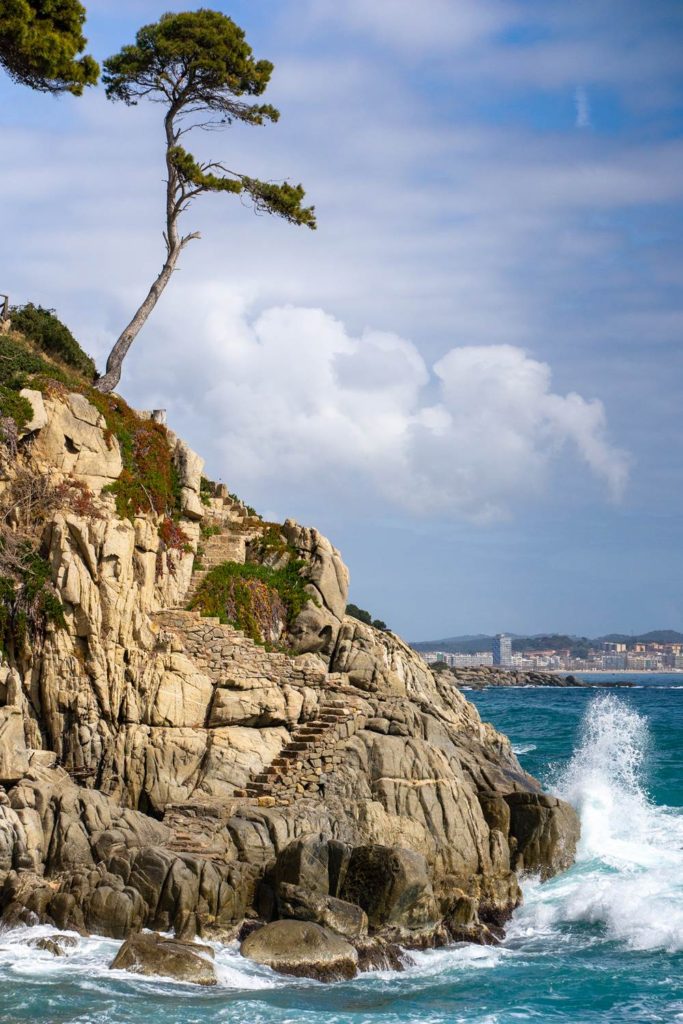
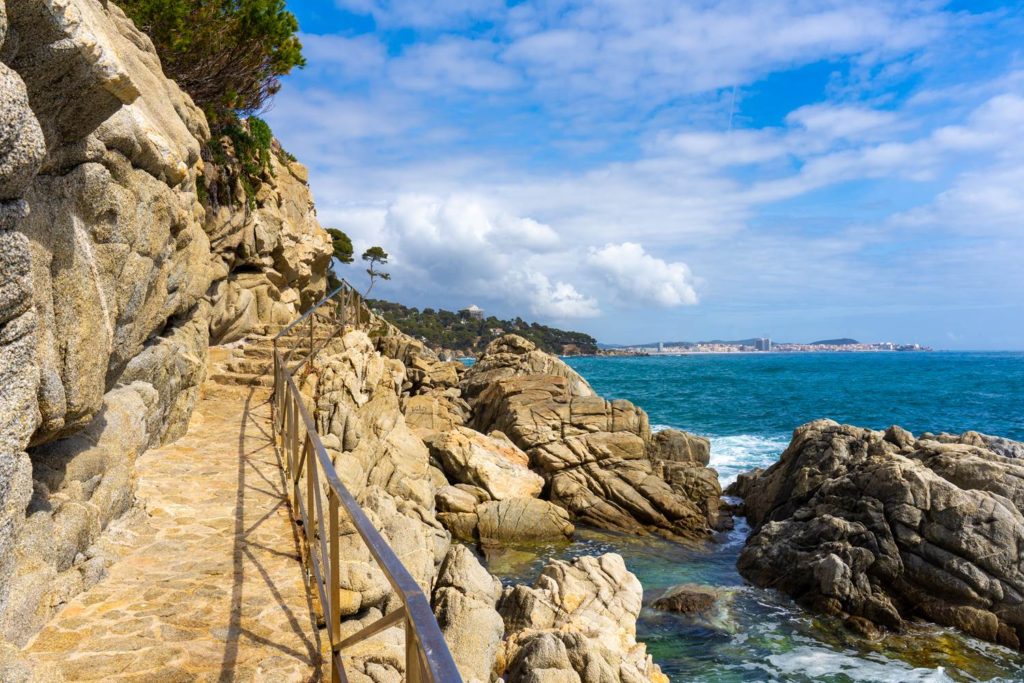
Camino de Ronda
The Camino de Ronda is a long-distance route that runs along the entire coastline of the Costa Brava. It is marked with the number GR 92, in commemoration of the 1992 Barcelona Olympics. It begins in Portbou, near the border with France, and ends in Blanes. The GR92 extends even farther beyond the Costa Brava to the south.
Here it is worth walking the path in the Tossa de Mar/Lloret de Mar area; the views are truly amazing.
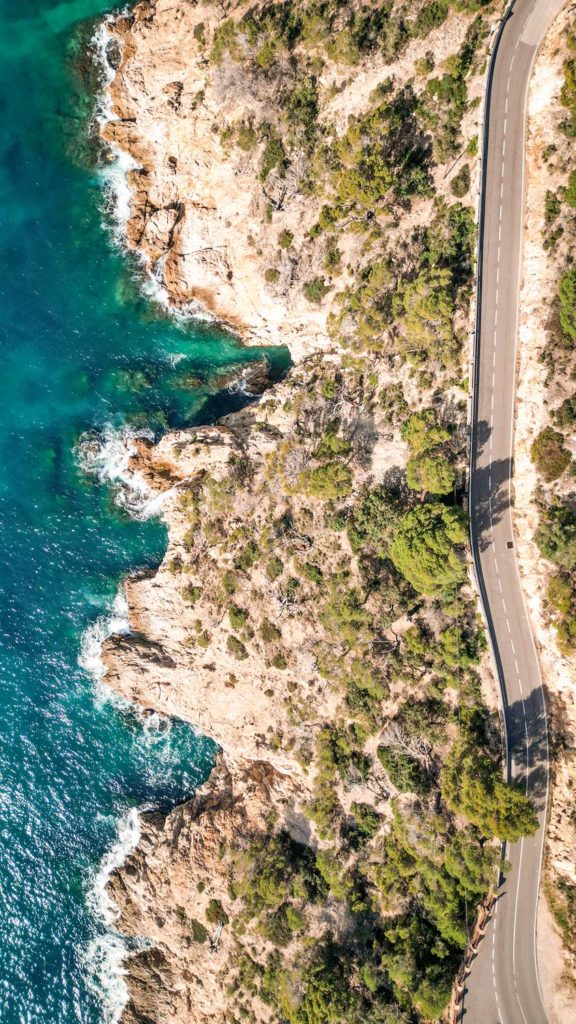
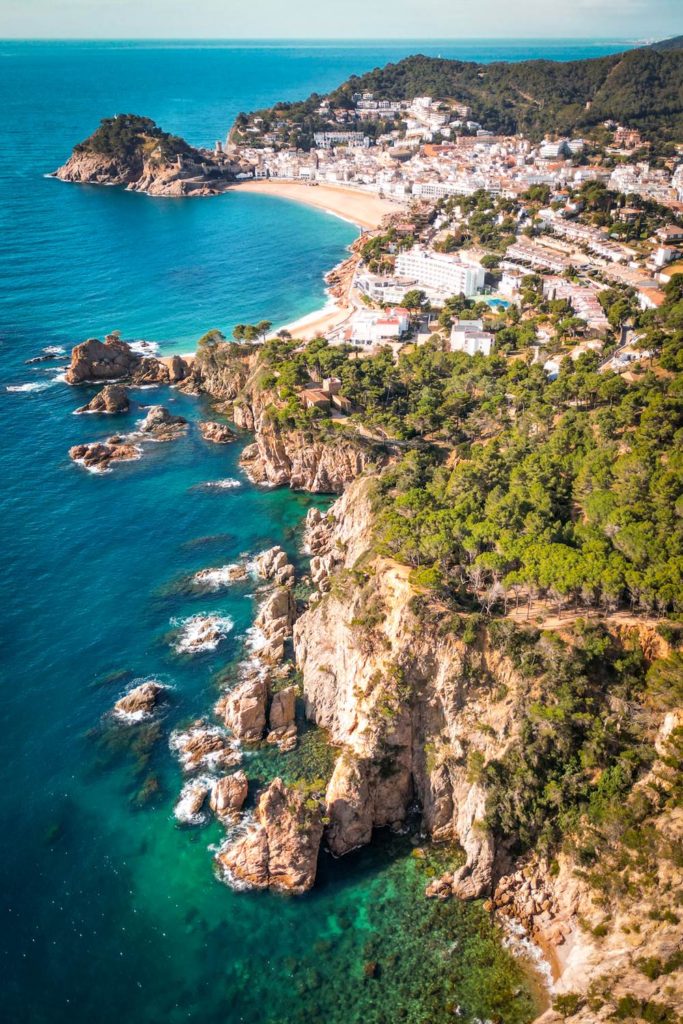
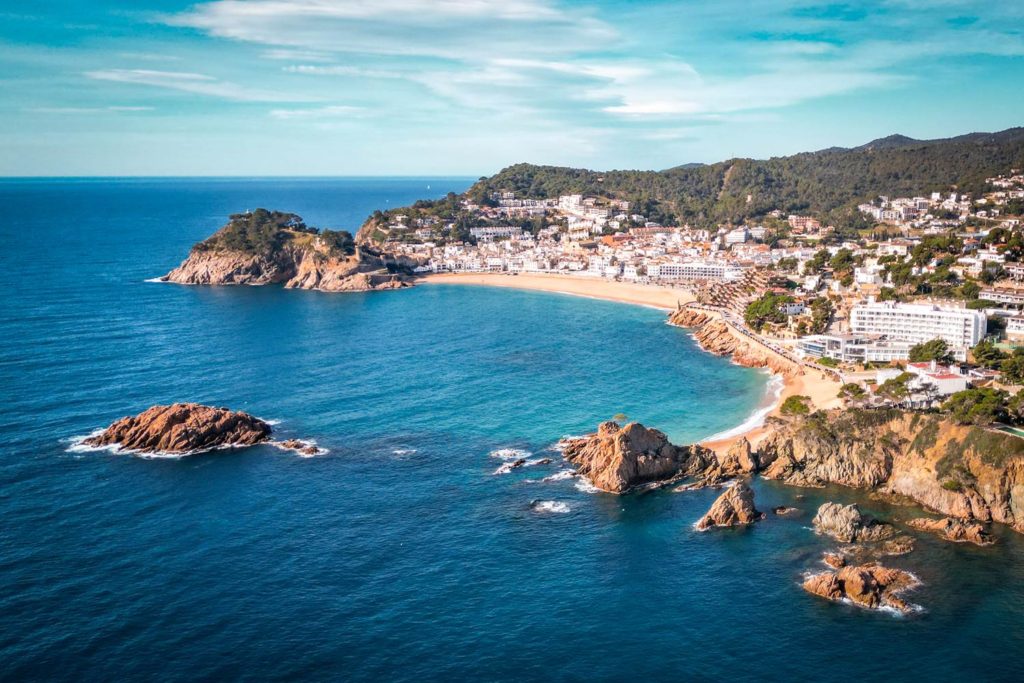
Accommodation on the Cami de Ronda
Accommodations along the Camí de Ronda trail offer a variety of options. Throughout the route, you can find a wide range of places to sleep, from guesthouses to hotels to resorts with sea views. In high season, you may have trouble booking overnight, depending on the length of your reservation and the location.
You can find well-rated accommodations below:
- An apartment located in Palamós, right on the beach of Platja de la Fosca, has air conditioning, free parking, and a terrace with sea views, as well as 4 bedrooms, 2 bathrooms, and a fully equipped kitchen.
- Follow this link to book a room at the luxury hotel with direct access to the beach. On-site spa, free Wi-Fi, parking, swimming pool. Available rooms with private terrace and sea view, location Platia d’Aro
A modern hotel located in the historic center of Tossa de Mar right on the beach offers rooms with beautiful sea views. Book at this link.
You can find other accommodations on the Costa Brava at this link.
Booking.comIf you prefer camping, there are also several campsites along the Cami de Ronda trail, such as Camping Cala Llevado, which is situated in a pine forest and has its own beach.
In conclusion, the Cami de Ronda trail is an excellent destination for nature lovers, hikers, and history enthusiasts. It offers a unique opportunity to explore the picturesque coastline of the Costa Brava, discover charming towns and villages, and immerse yourself in the local flora and fauna. With its breathtaking views, crystal clear waters, and rich history, the Cami de Ronda is a must-see attraction for anyone visiting the region.
See also:
13 Best Things to Do in Barcelona
Top Things to Do in Lloret de Mar (Spain)
Discover the Hidden Gems of Costa Brava
Sant Feliu de Guixols: What To Do in This Catalan Town
Discover Costa Daurada – Attractions and Beautiful Places
Vacations in Tossa de Mar – Discover the Extraordinary Beauty of the Costa Brava
Reus – What To See In Gaudi’s City?
Hospitalet del Infante – Here You Spend a Beautiful Vacation